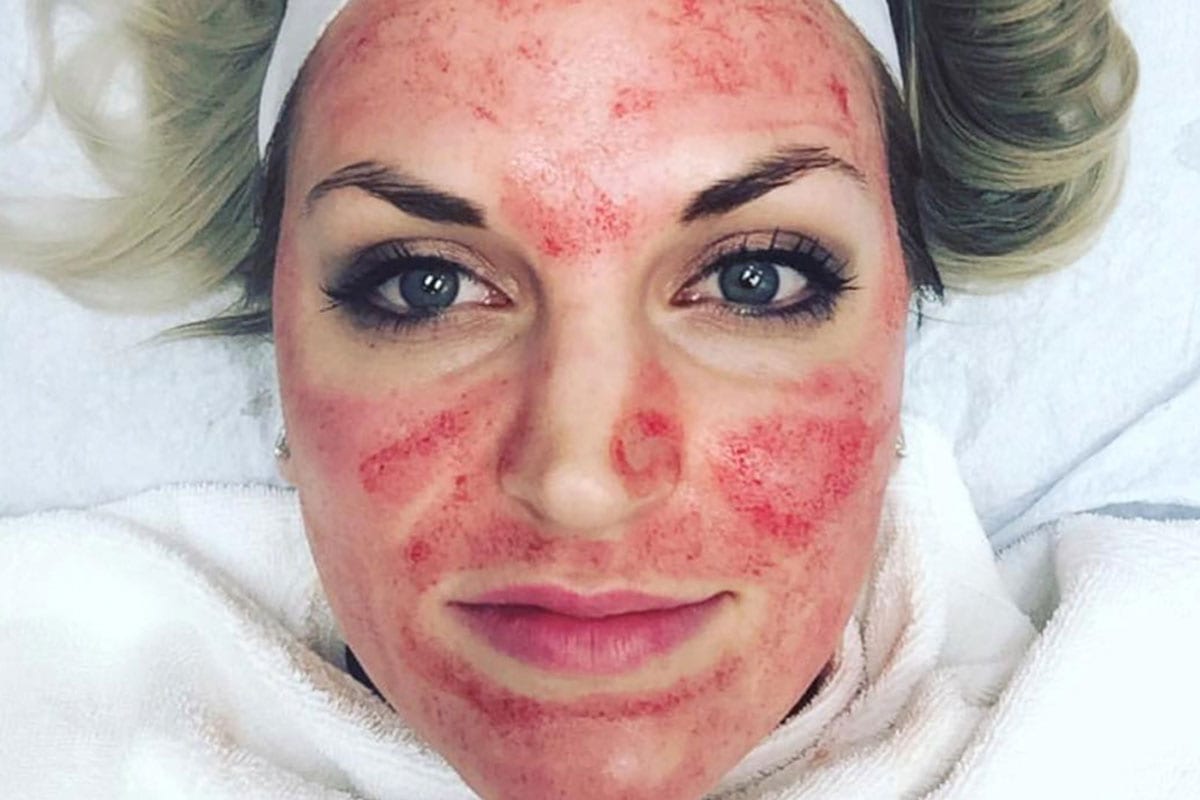
The name vampire facial came to the limelight in 2013 when the celebrity, Kim Kardashian, shared a photo of her face covered in blood on Instagram. Since then, this cosmetic procedure has been all the rage as more people look for ways to achieve youthful skin.
What is Vampire Facial?
It is an aesthetic procedure that uses a patient’s blood to rejuvenate the skin. The method was trademarked by a plastic surgeon called Dr. Charles Runels, and was initially called Platelet-Rich Plasma facial. This regenerative therapy leverages on the large number of growth factors in platelets blood cells.
Platelets are small blood cells that repair damaged cells and blood vessels. They contain a large number of growth factors that regenerate tissues. If the platelets are removed from the plasma, the cellular component of blood, and re-injected into the skin, the growth factors increase collagen production on facial skin.
How it is Performed
A needle is used to draw blood from the patient’s arm then spun in a centrifuge to separate the cellular components. The plasma extracted is then smeared on the patient’s face using small acupuncture-like needles which re-inject the platelets into the skin.
Two methods are used to re-inject platelets into the skin. The first involves re-injecting the blood directly into the face using a standard needle. The second requires the doctor to perform a process called microneedling to encourage collagen production.
Some studies show microneedling improves PRP outcomes (though the evidence remains inconclusive) . This is because the procedure tricks the skin into thinking it has sustained a massive injury. Small pricks are made under the skin using a pen-like tool evenly, so the new skin has a uniform appearance.
PRP contains signals which are activated when the body is recovering from injury. Once microneedling creates micro-injuries PRP is performed to stimulate heightened collagen production. Advocates for PRP state it has the following benefits:
- Tighten open pores
- Improve the appearance of scars, wrinkles and stretch marks
- Rejuvenate the under-eye area
- Add volume on specific areas of the face instead of getting fillers
- Reduced downtime after the procedure
Who can Perform the Procedure
There are a few practitioners who are certified and trained can perform vampire facial. This is because it is a medical procedure and not a cosmetic one. Also, there is the fact that PRP requires special medical equipment.
The main machine is called a phlebotomy kit, which is used to draw blood from the patient’s arm.
A centrifuge is also necessary to separate the components of blood plasma. The demands for phlebotomist have been increasing since the pandemic took over. And there are various online phlebotomy courses as well. And mostly people prefer taking the online classes as phlebotomy classes online are cheaper than in-class.
How Many Appointments Do You Need?
The effect of the procedure is not evident immediately, sometimes taking weeks or months to notice changes. While the changes are permanent, you may need another procedure as collagen production wears off as you grow old.
Patients over forty need three treatments within a 4-6 week interval. Younger clients, on the other hand, require one appointment as their skin is still producing large amounts of collagen. The procedure takes an hour and a half, and you don’t need to visit the doctor’s office as it can be performed at the comfort of your home. The doctor only needs to have sterile equipment, including disposable needles, a phlebotomy kit and a centrifuge.
How Invasive is the Procedure?
PRP is not as invasive, but you will feel a little uncomfortable as the needles are injected into the skin. A local anesthetic (calming treatment or serum) may be applied on the face to numb the pain though injections made onto the lip border are a bit painful.
This technique has become pretty popular as it is the only skincare procedure that does not involve the injection of artificial objects into the body. What’s more, it treats a variety of skin problems (acne scars, pores, fine lines, wrinkles) at once.
Possible side-effects include mild itchiness, bruising, and puffiness. Bruising is likely to develop around the eyes because the under-eye region is rich in small blood vessels.
How to Take Care of the Face Post-PRP
The face becomes swollen and bruised hence the need to keep off strenuous activity for a day or two. Also, consider lying pillows under your head to keep the head slightly elevated when sleeping.
